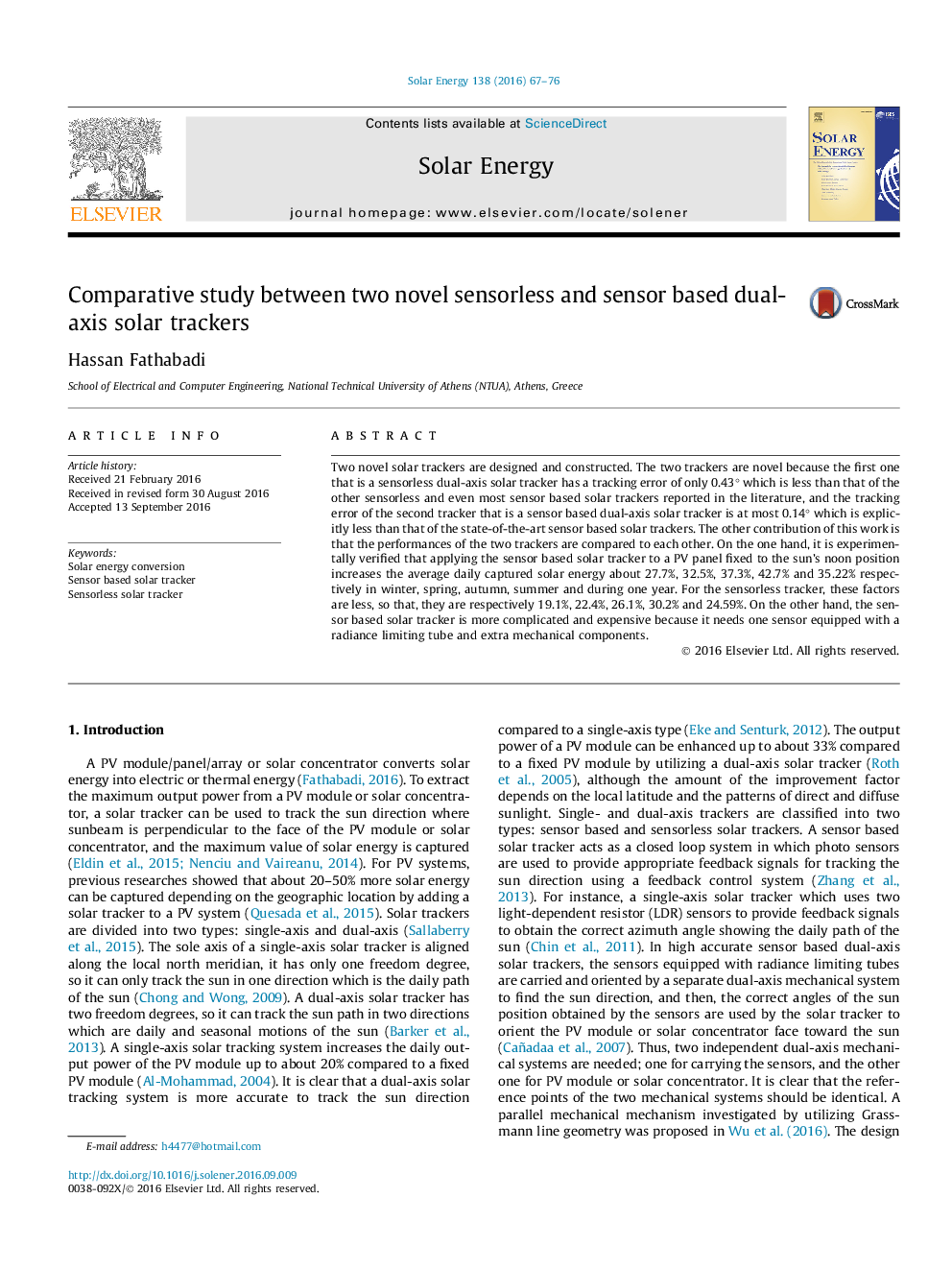| Article ID | Journal | Published Year | Pages | File Type |
|---|---|---|---|---|
| 5451449 | Solar Energy | 2016 | 10 Pages |
Abstract
Two novel solar trackers are designed and constructed. The two trackers are novel because the first one that is a sensorless dual-axis solar tracker has a tracking error of only 0.43° which is less than that of the other sensorless and even most sensor based solar trackers reported in the literature, and the tracking error of the second tracker that is a sensor based dual-axis solar tracker is at most 0.14° which is explicitly less than that of the state-of-the-art sensor based solar trackers. The other contribution of this work is that the performances of the two trackers are compared to each other. On the one hand, it is experimentally verified that applying the sensor based solar tracker to a PV panel fixed to the sun's noon position increases the average daily captured solar energy about 27.7%, 32.5%, 37.3%, 42.7% and 35.22% respectively in winter, spring, autumn, summer and during one year. For the sensorless tracker, these factors are less, so that, they are respectively 19.1%, 22.4%, 26.1%, 30.2% and 24.59%. On the other hand, the sensor based solar tracker is more complicated and expensive because it needs one sensor equipped with a radiance limiting tube and extra mechanical components.
Keywords
Related Topics
Physical Sciences and Engineering
Energy
Renewable Energy, Sustainability and the Environment
Authors
Hassan Fathabadi,
